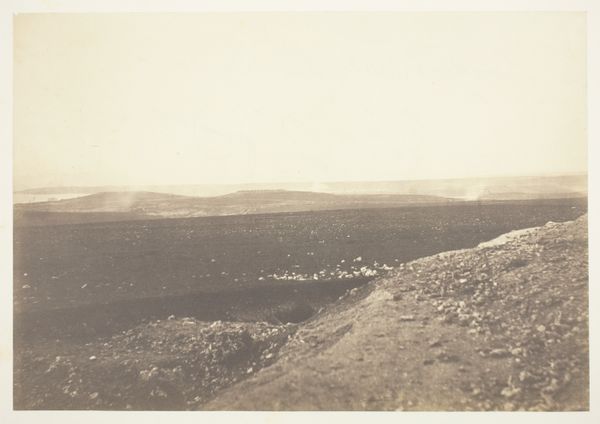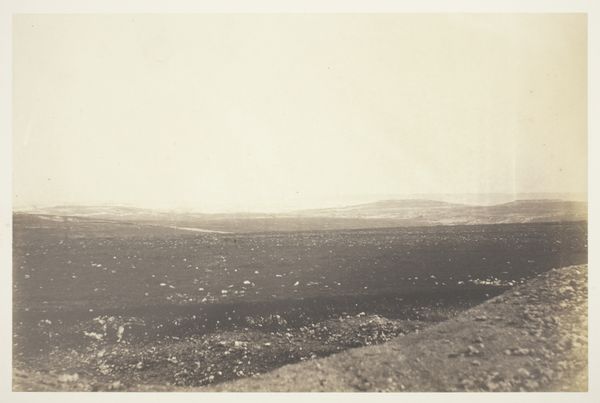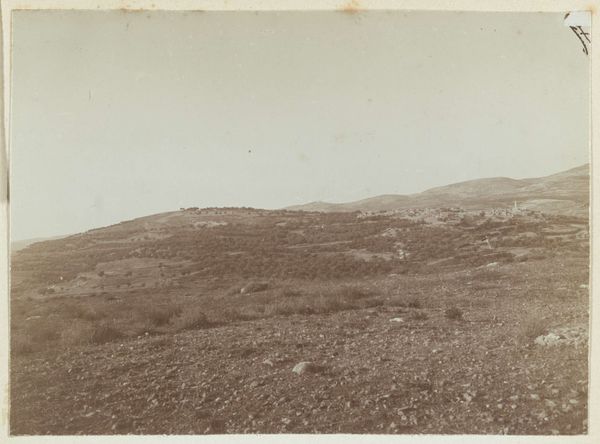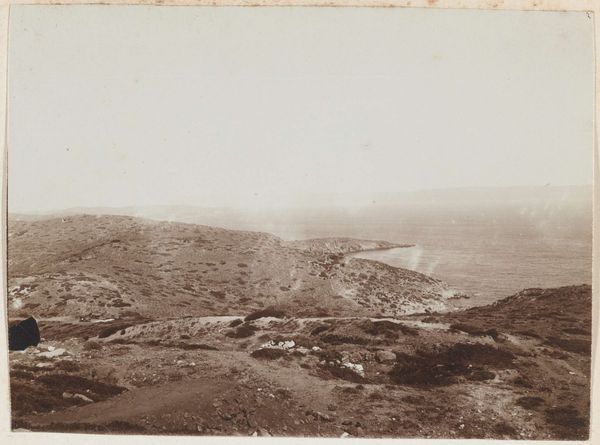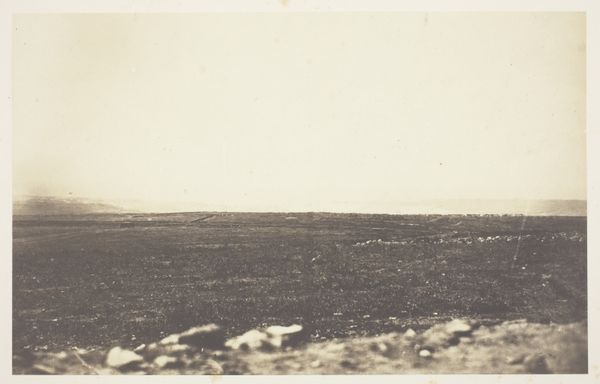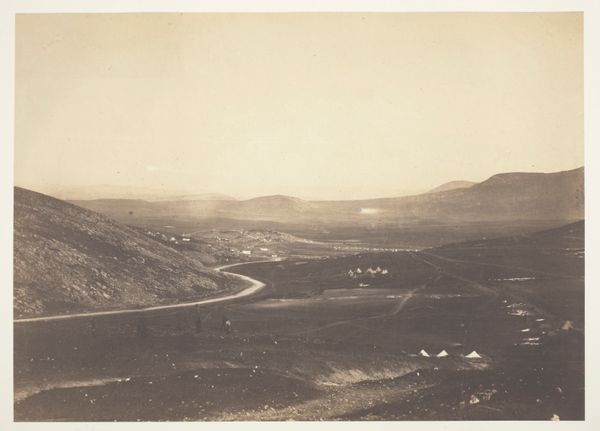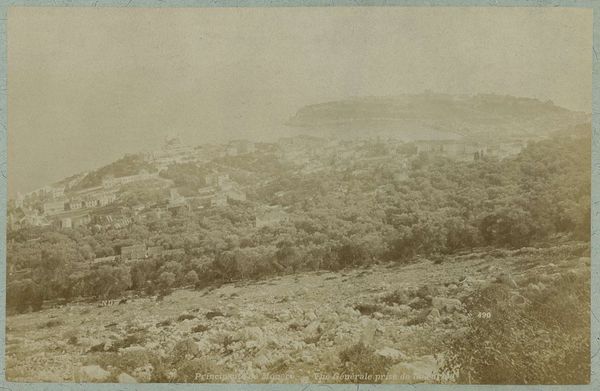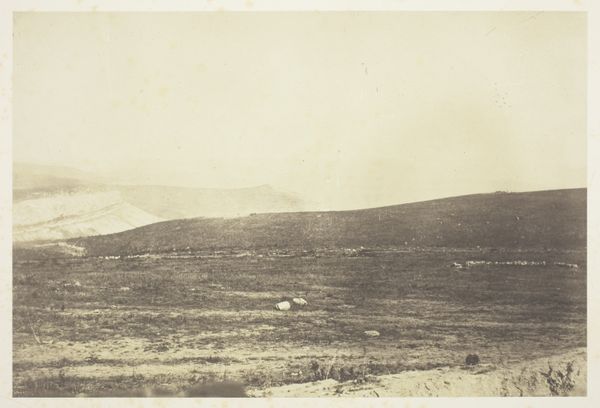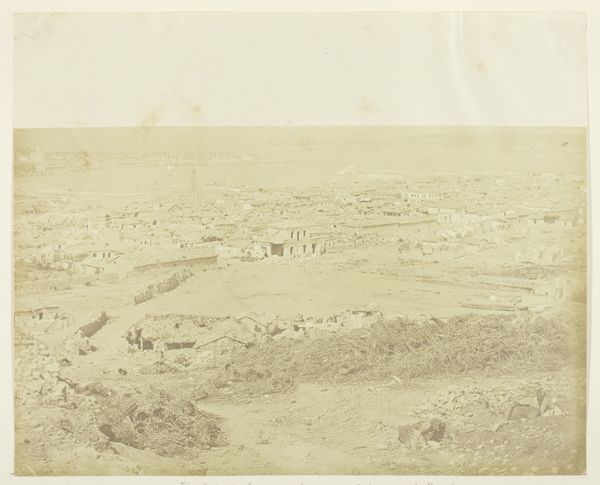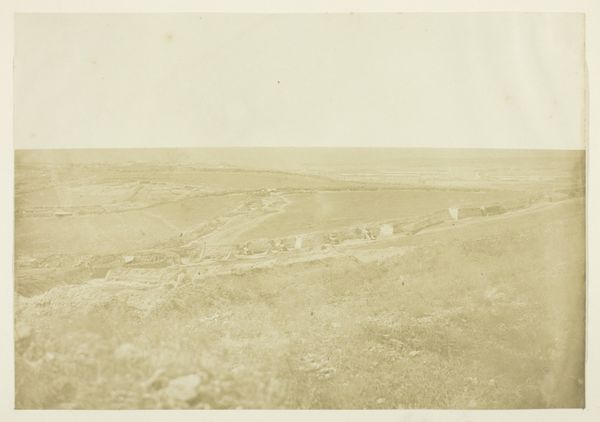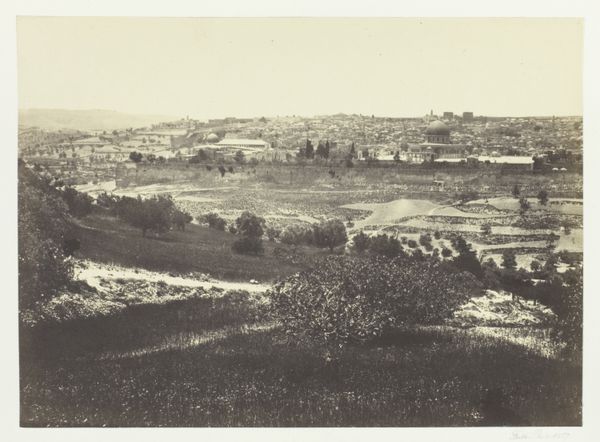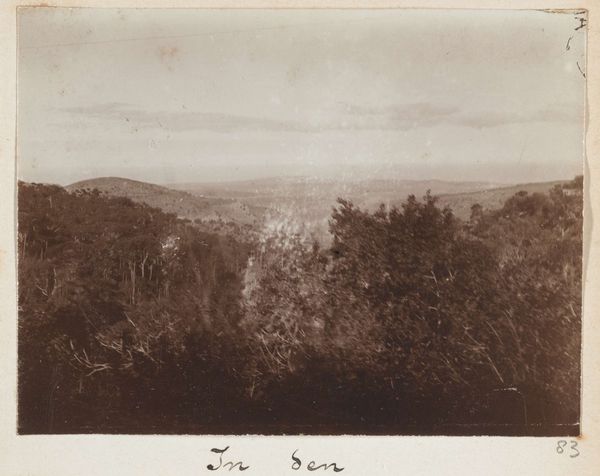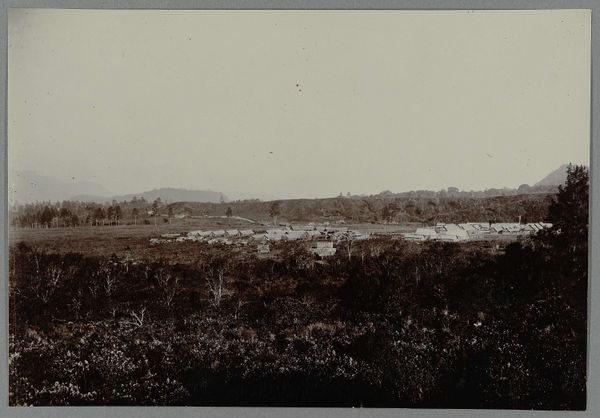
photography, albumen-print
#
landscape
#
nature
#
photography
#
orientalism
#
albumen-print
Dimensions: height 200 mm, width 251 mm
Copyright: Rijks Museum: Open Domain
Editor: We're looking at Giorgio Sommer's "Naples Seen from the Slopes of Vesuvius," an albumen print dating from around 1870 to 1900, currently held at the Rijksmuseum. What immediately strikes me is the sharp contrast between the dark, textured foreground of the volcanic slopes and the distant, hazy cityscape. What do you make of this photograph? Curator: Precisely. The power of this image lies in that very tension. Note how Sommer employs a receding perspective, creating a dialogue between the immediate and the far-off. The tactile, almost overwhelming darkness of the foreground, defined by the Vesuvian rock, sharply gives way to the comparatively light and ethereal cityscape. It creates an intriguing visual stratification, does it not? Editor: Yes, it really emphasizes the distance. It's almost as if the foreground is consuming the city, or at least visually dominating it. Do you think the textural contrast contributes to the picture’s mood? Curator: Absolutely. Texture plays a critical role here. The coarse granular surface of the volcanic rock provides a stark counterpoint to the implied smoothness of the water and the built environment. This juxtaposition enhances the dramatic effect of the photograph. It invites close inspection, yet it frustrates complete comprehension due to its sheer volume. Editor: I see what you mean! So, it’s the strategic use of formal elements that carries the emotional weight here? Curator: Precisely. Through careful consideration of composition, light, and texture, Sommer compels us to contemplate the precariousness of human settlement nestled in the shadow of a powerful, dormant volcano. Editor: That's fascinating; I hadn't considered how Sommer uses purely visual language to convey such a strong sense of place and impending natural forces. Thank you. Curator: Indeed. It's a powerful reminder that meaning is constructed as much through visual syntax as it is through representational content.
Comments
No comments
Be the first to comment and join the conversation on the ultimate creative platform.
